Comparison of the effect of synthetic leather water-based and solvent polyurethane resin on the air quality of the workplace
With economic development, scientific and technological progress, and the improvement of people’s quality of life, the market’s demand for leather products is increasing, making leather supply in short supply. More and more PU synthetic leather has been widely used in leather products, and the technology of synthetic leather has also been continuously updated. During the production process, the main component of urethane resin, dimethylformamide (DMF), continuously volatilizes into the air, which affects the air quality in the workplace and the health of employees, and causes acute and chronic poisoning and even death. It also causes pollution to the surrounding mirrors, and has a significant odor within 2km of the surrounding area. Although the D M F in the air and waste water of the operating field has been repeatedly recovered and recovered, the actual effect is limited. In order to change the above situation, in 2017, Huaian Kaiyue Technology Development Co., Ltd. produced water-based products, and now compares the effect of water-based PU resin and solvent-based (oily) Pu resin on air quality in the workplace.
1.1 Object
Randomly selected 5 companies each using water-based PU resin and solvent-based PU resin synthetic leather, and set up a monitoring point for each of the dry ingredients, wet ingredients, dry coating stations, and wet coating stations to monitor the DMF concentration in the air of the workplace To compare and analyze the results.
1.2 Method
SQC-1000 atmospheric sampler was used to measure DMF in the air of the workshop, and it was tested according to GBZ159-2004 “Sampling Specifications for Monitoring of Hazardous Substances in the Air of Workplaces” and GBZ / T160.62-2004 {51 ~ Determination of Hazardous Substances in Workplace Air ” Methods for sampling and detection.
1.3 Statistical processing
The data obtained from the monitoring were entered into a computer for statistical processing with SPSS 13.0 software. The t-test was used for the count data. P
1.4 Judgment basis
Based on the exposure limit of harmful factors in the workplace: Part 1: Chemical harmful factors GBZ2.1-2007
2.1 Qualifications of monitoring sites at different positions A total of 240 samples were collected from 10 enterprises. A total of 120 samples of water-based PU resin and solvent-based PU resin were used. The eligibility rates were 88.3% and 32.5%, respectively. The highest rate of dry formulation of water-based PU resin is 93.3%, and the lowest rate of solvent-type PU resin wet coating is 23.3%. Explain that the solvent type PU resin industry is severely contaminated (Table 1).
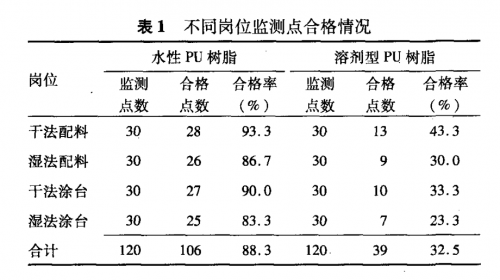
2.2 Results of DMF concentration monitoring points in the air at different positions
The average concentration of water-based Pu dry ingredients is at least (15.3 ± 2.4) mg / m, and the average concentration of solvent-type PU wet coating stations is (48.1 ± 5.8) mg / m3.
2.4 times the national health standard. The 8 monitoring points were divided into 4 groups and the comparisons were all P
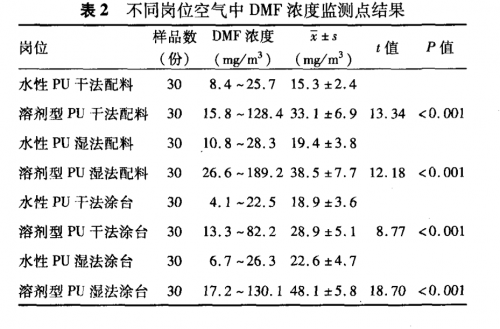
Solvent-based PU resin is directly dissolved in DMF, methyl ethyl ketone, toluene, oxalic acid, diethylene glycol, 1.4 monobutylene glycol, adipic acid, diphenylmethane diisocyanate (MDI), diisocyanate Polymer compounds formed in organic solvents such as tolyl ester (TDI). These solvents are volatile, odorous, flammable and explosive, toxic and harmful organic solvents, and the content is about 70%. The water-based PU resin refers to a polymer compound in which polyurethane is dissolved or dispersed in water. Such solvents are based on water and contain about 30% of the above organic solvents. Compared with solvent-based PU resins, they have advantages such as non-toxic, non-flammable, explosion-proof, and environmental protection.
The results of this monitoring show that the total qualification rate of 40 monitoring sites of 10 companies is only 60.4%, of which the qualified rate of waterborne PU resin is 88.3%, and the qualified rate of solvent-based PU resin is 32.5%. Explain that the D M F in the air of the work place exceeds the standard seriously, and the wet coating is even more important.
Based on the analysis of the monitoring results of DMF concentration in the air of different positions, the DMF concentration of a single sample at different positions in the work area varies greatly, the lowest is a water-based PU dry coating platform of 4.1 mg / m, and the highest is a solvent-based PU wet method. mg / m. . From the average concentration analysis, the lowest is 15.3 mg / m for water-based PU dry preparation, and the highest is 48.1 m g / m for solvent-type PU wet coating station. . However, it was significantly lower than the average concentration of DMF in the wet depot reported by Sun Shuhua et al. 148.27mg / in.
From the monitored samples, it was found that the concentration of solvent-based PU resin was significantly higher than the concentration of water-based PU resin in the air of the workplace, with a P value
For the synthetic leather industry, green manufacturing is the general trend. Water-based PU leather has been used in many international famous brands, such as Stella McCartney, Zara, H & M, Nike, Adidas, etc.
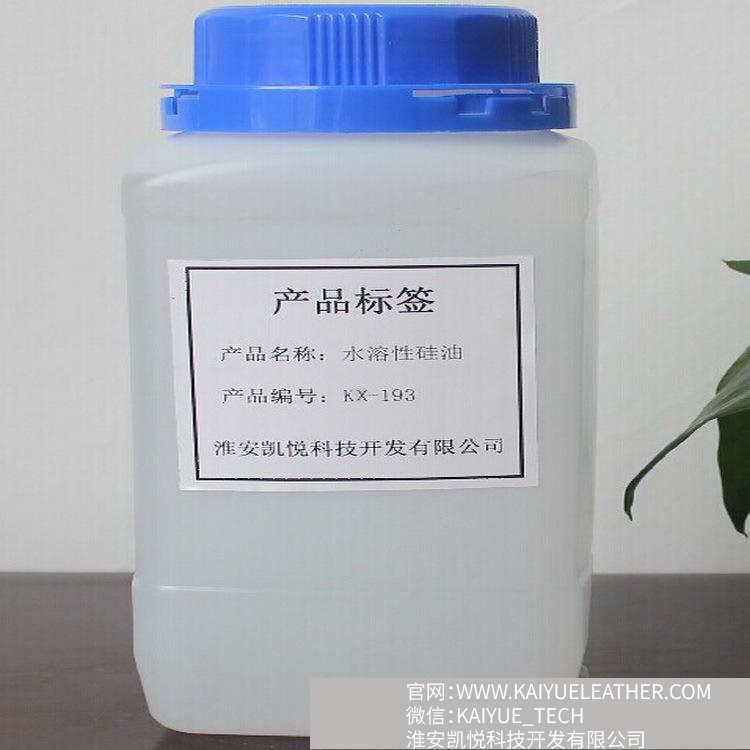 Water-soluble silicone oil for cosmetic system additives KX-193/DC-193
Water-soluble silicone oil for cosmetic system additives KX-193/DC-193
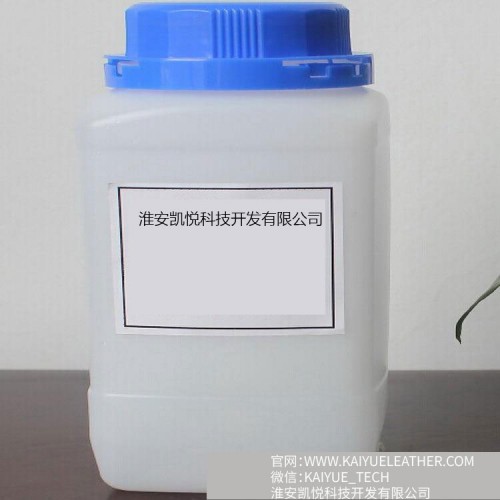 Alkyl aryl silicone oil
Alkyl aryl silicone oil
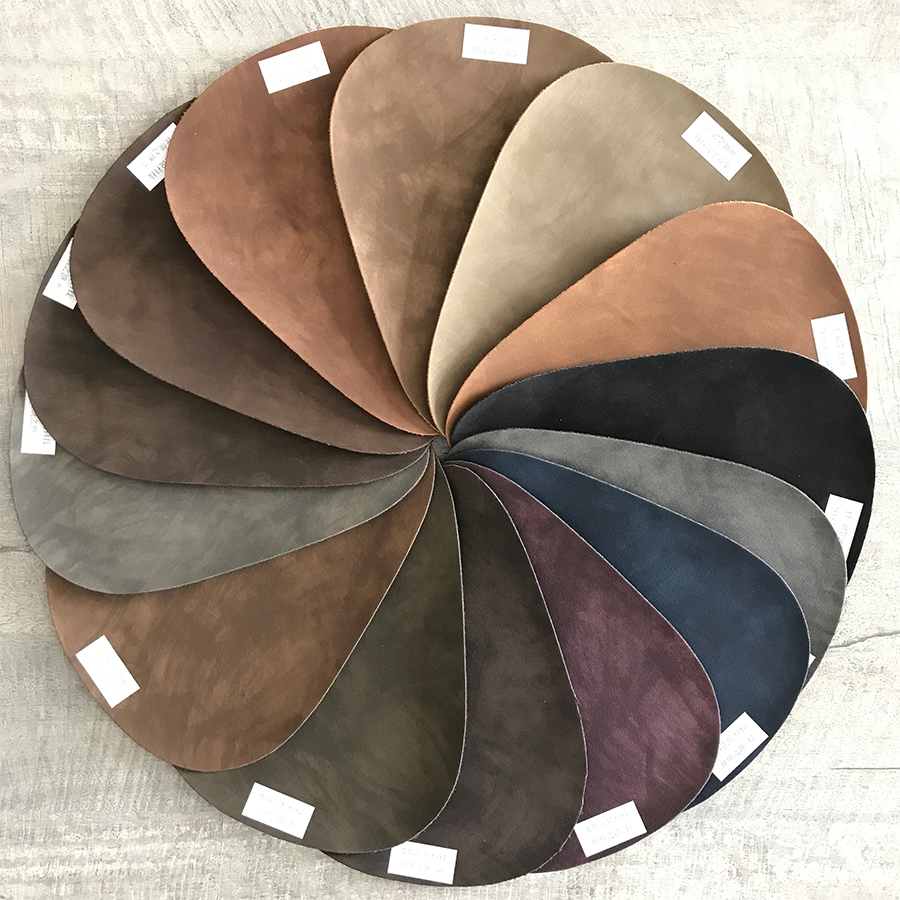 Waterborne PU Yangbuck II
Waterborne PU Yangbuck II
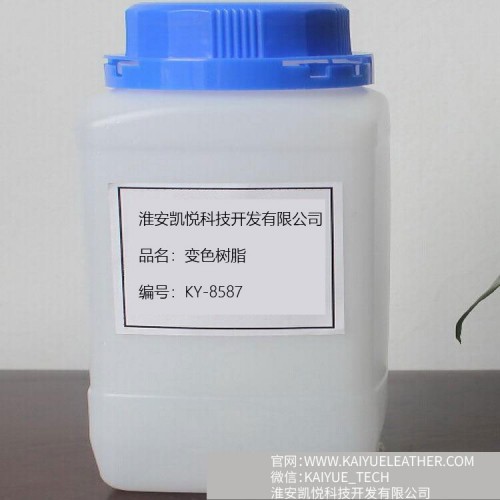 Color-changing resin, good effect of discoloring leather, good temperature resistance KY-8587
Color-changing resin, good effect of discoloring leather, good temperature resistance KY-8587
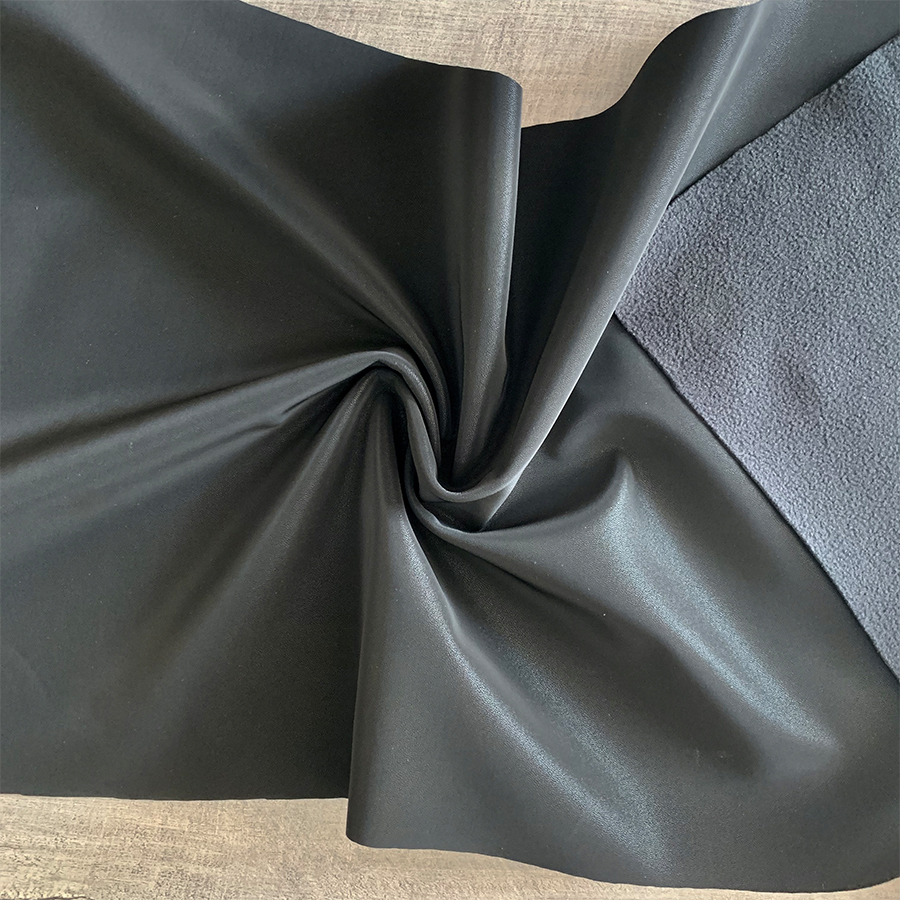 Flannel- For Garments
Flannel- For Garments
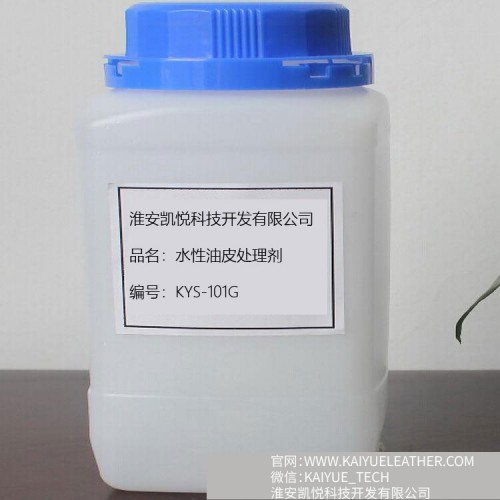 Water-based leather surface treatment agent Good oil brightness, translucent feeling, good leather feeling KYS-101G
Water-based leather surface treatment agent Good oil brightness, translucent feeling, good leather feeling KYS-101G
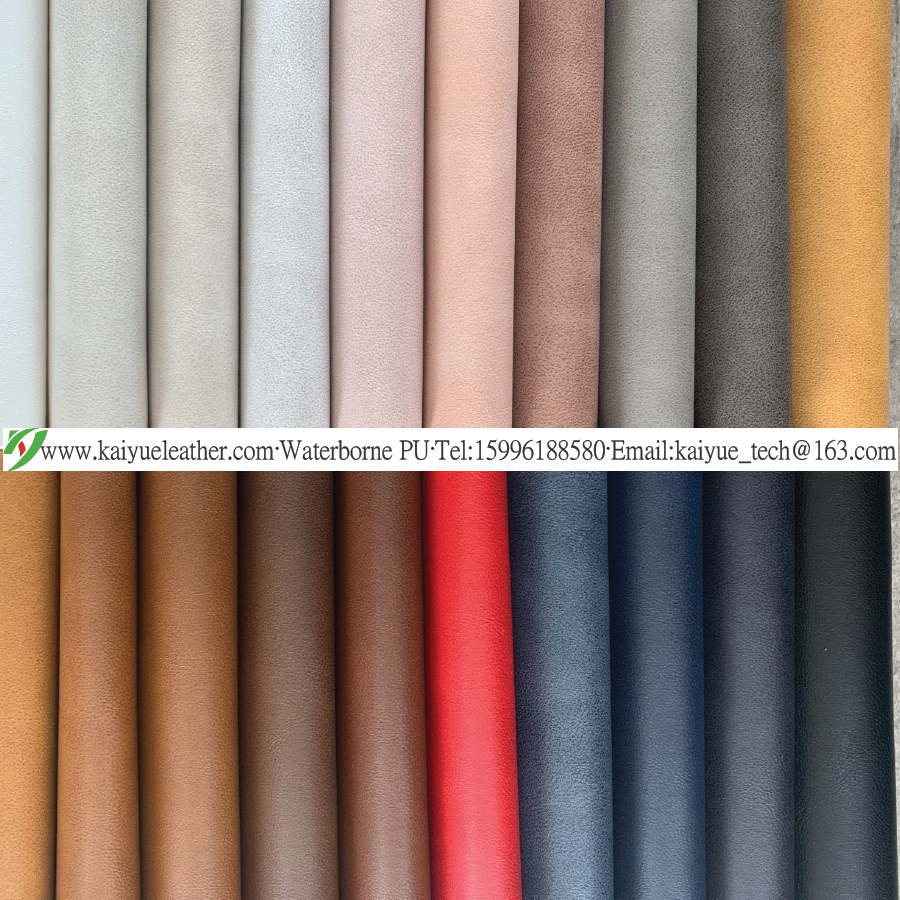 Waterborne PU-KY-9884
Waterborne PU-KY-9884
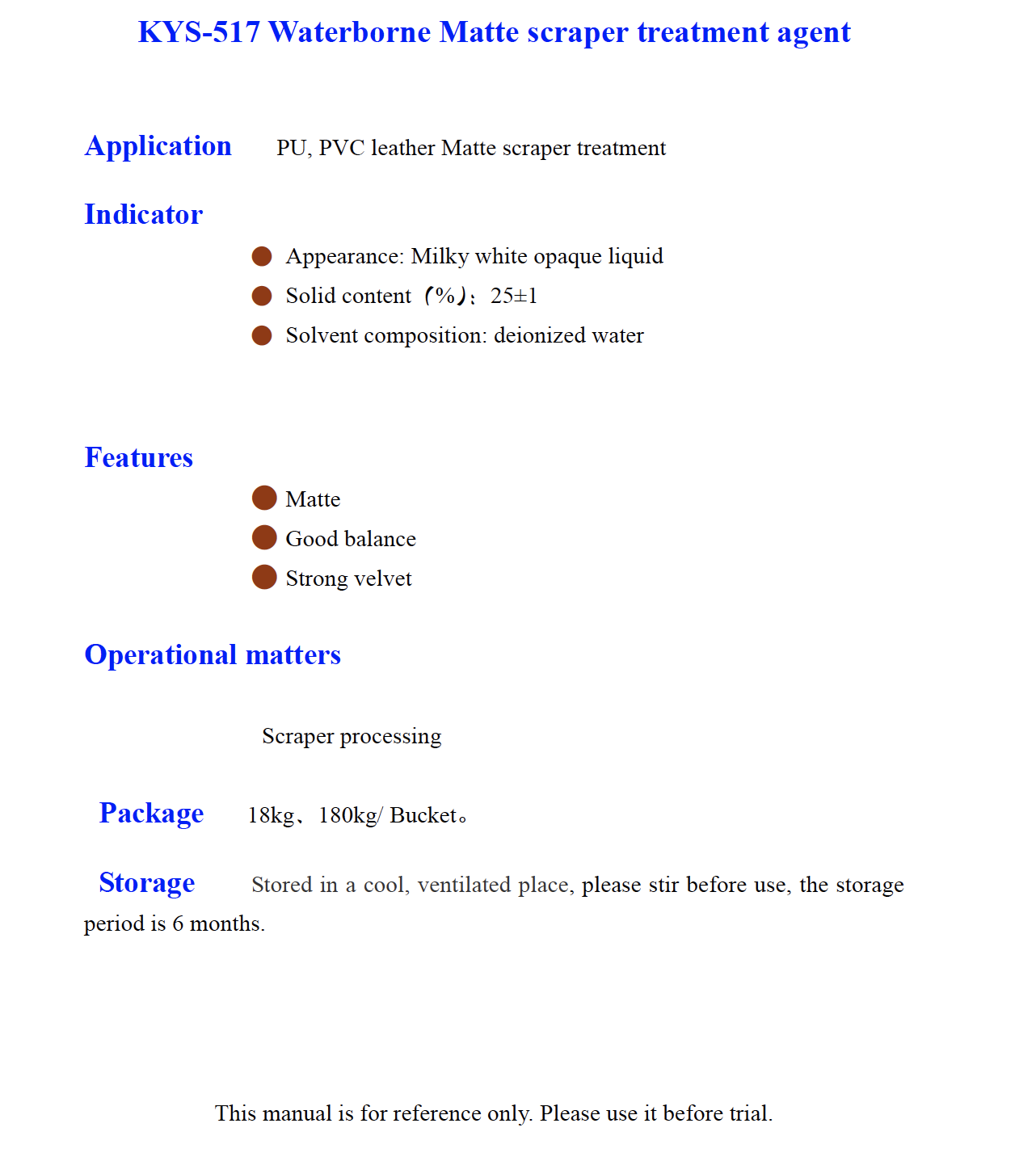 KYS 517 Waterborne Matte scraper treatment agent
KYS 517 Waterborne Matte scraper treatment agent